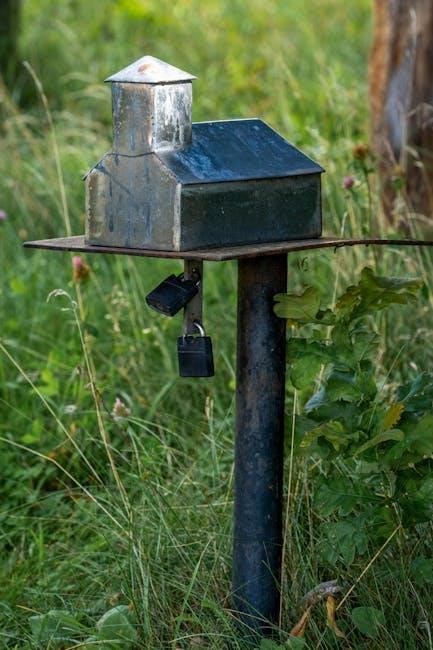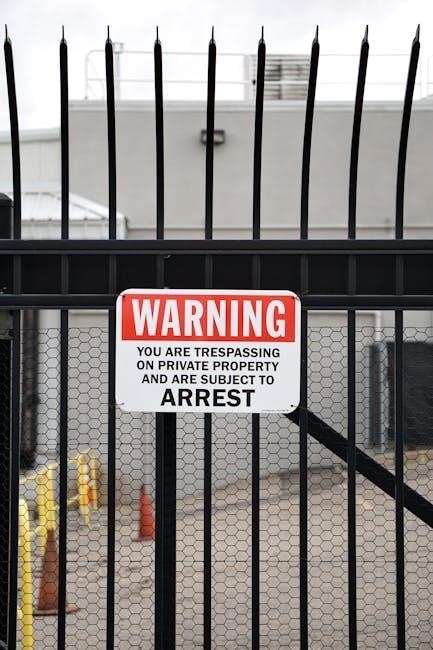Discover our engaging Area and Perimeter PDF Worksheets, designed to make geometry fun and accessible for students of all ages. Each worksheet includes answer keys for easy verification and covers a variety of shapes, from basic squares and rectangles to complex figures, ensuring comprehensive practice and real-world applications.

What Are Area and Perimeter Worksheets?
Area and perimeter worksheets are educational resources designed to help students practice calculating the area and perimeter of various shapes. These worksheets typically include problems involving squares, rectangles, triangles, circles, and more complex figures. They often feature word problems and visual diagrams to enhance understanding. Many worksheets are available in PDF format, making them easy to download and print. They also frequently include answer keys, allowing students and educators to verify solutions. These tools are ideal for reinforcing geometry skills and building mathematical confidence in learners of all ages.
Importance of Using PDF Worksheets for Math Practice
PDF worksheets offer a convenient and effective way to practice area and perimeter concepts. They are easily downloadable, printable, and provide structured exercises for consistent skill development. Many worksheets include answer keys, enabling students to self-assess and track progress. Their portability and clarity make them ideal for homework or classroom use. Additionally, they cater to diverse learning needs, offering problems for various skill levels and learning styles. Regular practice with these resources helps build confidence and mastery in geometry, essential for academic success.
Brief Overview of Area and Perimeter Concepts
Area and perimeter are fundamental geometry concepts. The area measures the space inside a shape, expressed in square units, while the perimeter is the total length around it, measured in linear units. These concepts apply to various shapes, from basic squares and rectangles to complex figures like circles and irregular polygons. Understanding these basics is crucial for solving real-world problems, such as calculating materials needed for construction or determining boundaries. Regular practice with PDF worksheets helps students master these skills, building a strong foundation for advanced math topics like volume and algebra.

Educational Benefits of Area and Perimeter Worksheets
Area and Perimeter Worksheets enhance mathematical fluency, improve problem-solving abilities, and foster a deeper understanding of spatial relationships, preparing students for real-world applications of geometry concepts.
Developing Problem-Solving Skills in Geometry
Area and Perimeter Worksheets are essential tools for enhancing problem-solving skills in geometry. By practicing calculations for various shapes, students improve their ability to approach complex problems methodically. These worksheets introduce different problem types, such as word problems and irregular shapes, fostering critical thinking. Regular practice helps students master formulas and apply them confidently. With answer keys provided, learners can verify their solutions and understand their mistakes, making these worksheets invaluable for building a strong foundation in geometry and logical reasoning. They also encourage real-world applications of math concepts, connecting theory to practical scenarios.
Enhancing Understanding of Spatial Awareness
Area and Perimeter Worksheets play a crucial role in improving spatial awareness by helping students visualize and understand the relationships between shapes and their dimensions. Through hands-on practice, learners develop the ability to mentally break down complex shapes into simpler forms, enhancing their geometric reasoning. Calculating area and perimeter encourages students to think critically about the properties of different shapes, such as rectangles, triangles, and circles, fostering a deeper understanding of spatial relationships and how they apply to real-world scenarios like designing rooms or building structures.
Building Confidence in Math Through Practice
Consistent practice with Area and Perimeter Worksheets empowers students to build confidence in their math skills. By solving problems repeatedly, learners master formulas and develop a stronger understanding of geometric concepts. The inclusion of answer keys allows students to verify their work independently, fostering a sense of accomplishment as they see improvement. This structured practice helps students approach challenges with ease, transforming math into a manageable and even enjoyable subject. Regular practice also enhances problem-solving speed and accuracy, preparing students for more complex math challenges ahead.

Types of Shapes Covered in Worksheets
Explore a variety of shapes, including squares, rectangles, triangles, parallelograms, trapezoids, rhombuses, circles, and irregular shapes. These worksheets cover fundamental geometric figures, aiding real-world math understanding.
Squares and Rectangles
Master the basics of geometry with squares and rectangles! These shapes are ideal for introducing area and perimeter concepts. Worksheets include calculating the area (length × width) and perimeter (2 × length + width) of rectangles, as well as the area (side²) and perimeter (4 × side) of squares. Students also solve word problems, such as finding the perimeter of a room or the area of a garden. With answer keys provided, these exercises build confidence and proficiency in foundational math skills. Perfect for elementary learners, these PDF worksheets make practice fun and interactive.
Triangles and Parallelograms
Explore triangles and parallelograms with our detailed PDF worksheets! Students learn to calculate the area of triangles using the formula (base × height) / 2 and the perimeter by summing all sides. For parallelograms, the area is base × height, while the perimeter is 2 × (base + side). Worksheets include problems for equilateral, isosceles, and scalene triangles, as well as various parallelogram shapes. These exercises help build foundational geometry skills and prepare students for more complex shapes and word problems. Answer keys are provided for easy verification and practice tracking progress.
Trapezoids, Rhombuses, and Circles
Master the area and perimeter of trapezoids, rhombuses, and circles with our detailed PDF worksheets! For trapezoids, students calculate the area using the formula ((a + b) / 2) × height and the perimeter by summing all sides. Rhombuses use base × height for area and 4 × side length for perimeter. Circles involve calculating the area (πr²) and circumference (2πr), which is akin to perimeter. These exercises help students grasp unique properties of each shape and apply formulas accurately. Answer keys are included for easy verification and practice.
Complex and Irregular Shapes

Challenge students with complex and irregular shapes to enhance their geometry skills. These PDF worksheets feature shapes that require breaking down into simpler forms for calculations. For irregular shapes, students often decompose them into triangles, rectangles, or other standard shapes to find the area and perimeter. This approach builds problem-solving skills and fosters a deeper understanding of spatial relationships. Real-world applications, such as calculating the perimeter of an irregular garden or the area of a complex figure, make learning practical and engaging. Each exercise encourages critical thinking and mathematical reasoning, preparing students for advanced geometry concepts. Answer keys are included for easy verification and feedback.

How to Use Area and Perimeter PDF Worksheets
These PDF worksheets are versatile tools for teaching and learning. Teachers and parents can guide students through step-by-step problems, while students can practice independently. Perfect for classwork or homework, they cover various shapes and include answer keys for easy verification, making them ideal for grades 3 to 8.
Step-by-Step Guide for Teachers and Parents
Begin by introducing the concept of area and perimeter using visual aids. Distribute the PDF worksheets and guide students through sample problems. Encourage students to use rulers for accuracy and check their work with provided answer keys. Rotate through different shapes, starting with squares and rectangles, then progressing to triangles and complex figures. Regularly review mistakes to reinforce learning. For advanced students, incorporate word problems to connect math with real-world scenarios. Consistent practice with these worksheets ensures mastery of geometry skills and builds confidence in problem-solving abilities. This structured approach helps students grasp the practical applications of area and perimeter in everyday life.
Tips for Students to Approach Problems Effectively
Tips for Students to Approach Problems Effectively
Start by understanding the difference between area and perimeter. Use formulas correctly: area for space inside a shape (e.g., length × width for rectangles) and perimeter for the total boundary length. Visualize shapes and break them into simpler forms for complex figures. Always double-check measurements and calculations. Practice regularly to build familiarity with various shapes, including squares, rectangles, triangles, and circles. Use answer keys to verify solutions and learn from mistakes. For word problems, identify which concept (area or perimeter) is required and apply the appropriate formula. This structured approach will enhance problem-solving skills and confidence in geometry.
Utilizing Answer Keys for Verification
Answer keys accompanying area and perimeter worksheets are invaluable for self-assessment. Students can verify their solutions, ensuring accuracy and understanding. By comparing their work with the provided answers, learners can identify and correct mistakes, fostering a deeper grasp of concepts. Teachers and parents can also use these keys to track progress and provide targeted feedback. Regular use of answer keys promotes accountability and reinforces learning, helping students build confidence in their geometry skills.

Popular Resources for Area and Perimeter Worksheets
Explore top websites like K12MathWorksheets, MathWorksheets4Kids, and TeachingVine for free area and perimeter PDF worksheets. These platforms offer a wide range of downloadable resources, ensuring you find the perfect fit for your learning needs.
Recommended Websites for Free PDF Downloads
Access a variety of free area and perimeter PDF worksheets from trusted websites like K12MathWorksheets, MathWorksheets4Kids, and TeachingVine. These platforms provide extensive collections tailored for different grade levels, ensuring engaging and educational resources. Many worksheets include answer keys, making it easy for students and educators to verify solutions. They also offer customizable options, allowing users to create personalized practice materials. These websites are ideal for teachers, parents, and students seeking reliable and versatile area and perimeter practice tools to build problem-solving skills and reinforce math concepts.
Features of Paid and Free Worksheets
Both free and paid area and perimeter worksheets offer valuable resources for learning, but they differ in scope and features. Free worksheets provide basic practice problems, often with answer keys, and are ideal for introductory learning. Paid options, however, include advanced features like customizable templates, interactive exercises, and detailed solution guides. Some paid resources also offer progress tracking and multimedia elements, enhancing the learning experience. Free versions are great for casual practice, while paid versions cater to deeper understanding and personalized learning needs.
How to Create Custom Worksheets Online
Creating custom area and perimeter worksheets online is straightforward with specialized tools. Use worksheet generators to select specific shapes, problem types, and difficulty levels. Many platforms allow you to add images, diagrams, or word problems, making the content engaging and relevant. Tailor the worksheets to your teaching needs, ensuring they align with curriculum standards. After designing, download them in PDF format for easy printing or sharing. Some tools also offer features like answer keys and progress tracking, enhancing the learning experience for students.

Common Mistakes to Avoid in Calculations
Common errors include confusing area and perimeter, mixing formulas, or using incorrect units. Always double-check calculations and ensure understanding of the shape’s properties to avoid mistakes.
Understanding the Difference Between Area and Perimeter
One of the most common mistakes is confusing area and perimeter. The area refers to the space inside a shape, measured in square units, while the perimeter is the total length around the shape. For example, the area of a rectangle is found by multiplying its length and width, whereas the perimeter is the sum of all its sides. Mixing these concepts can lead to incorrect calculations. Always remind students to identify what the question is asking for—whether it’s the space inside or the boundary around the shape.
Avoiding Formula Confusion
A common challenge is confusing the formulas for area and perimeter. The area of a rectangle, for example, is calculated by multiplying length and width (A = l × w), while the perimeter is the sum of all sides (P = 2l + 2w). For circles, the area uses radius and π (A = πr²), while the perimeter (or circumference) is 2πr. Students often mix these formulas, leading to errors. Encourage them to identify the shape and its specific formula before solving. Highlighting or color-coding formulas can also help prevent confusion and improve accuracy in calculations.
Ensuring Accurate Unit Measurements
Accurate unit measurements are crucial when calculating area and perimeter. Always ensure that all sides of a shape are measured in the same unit (e.g., centimeters or inches) before performing calculations. Mixing units, such as using both inches and centimeters, can lead to incorrect results. For example, when finding the perimeter of a rectangle, adding measurements in different units can distort the final answer. Consistency in units helps maintain precision and avoids errors, especially in word problems or real-world applications where unit accuracy is essential for practical solutions.

Real-World Applications of Area and Perimeter
Area and perimeter skills are essential in everyday life, from gardening and architecture to DIY projects. They help measure spaces, design structures, and solve practical problems efficiently and accurately.
Practical Uses in Everyday Life
Understanding area and perimeter is crucial for real-world tasks like gardening, architecture, and DIY projects. For instance, calculating the perimeter helps determine fencing needs, while area measurement aids in flooring or painting. These skills are also vital in construction, allowing professionals to estimate materials accurately. Even daily activities, such as arranging furniture or planning events, benefit from a grasp of spatial measurements. By mastering these concepts, individuals can tackle practical challenges with confidence and precision, enhancing their problem-solving abilities in various scenarios.
Connecting Math to Real-World Scenarios
Area and perimeter concepts are essential for understanding real-world challenges, such as designing buildings, calculating material costs, or planning garden layouts. These skills help architects determine spacing and structural integrity, while landscapers use them to measure fencing and planting areas. By linking math to practical tasks, students develop problem-solving abilities and critical thinking. Worksheets that incorporate real-life examples bridge the gap between theory and application, preparing learners for future careers in engineering, construction, and more. This connection makes math engaging and meaningful, fostering a deeper understanding of its relevance in everyday life.
Encouraging Critical Thinking Through Applications
Area and perimeter problems in real-world contexts foster critical thinking by challenging students to analyze and solve practical scenarios. For instance, designing a garden or calculating room dimensions requires applying mathematical concepts creatively. These tasks encourage students to visualize problems, break them into manageable parts, and evaluate solutions. By connecting math to tangible situations, worksheets help learners develop logical reasoning and problem-solving strategies, preparing them for complex challenges in academics and beyond. This approach transforms abstract concepts into meaningful, applicable skills.
Area and perimeter PDF worksheets are valuable tools for mastering geometry, offering comprehensive practice for students of all grades with clear answers and varied challenges.
Summarizing the Value of Area and Perimeter Worksheets
Area and perimeter worksheets are essential tools for building foundational math skills, fostering problem-solving abilities, and enhancing spatial awareness. They provide structured practice for students to master geometry concepts, from basic shapes like squares and rectangles to complex figures. These worksheets also include answer keys, ensuring students can verify their work and learn from mistakes. By offering real-world applications, they connect math to practical scenarios, making learning engaging and meaningful. Consistent practice with these resources helps students achieve confidence and mastery in calculating area and perimeter.
Encouraging Consistent Practice for Mastery

Consistent practice with area and perimeter worksheets is key to achieving mastery. Regular use of these resources helps students build confidence and fluency in geometry. By solving problems repeatedly, they develop a deeper understanding of spatial relationships and formulas. Worksheets also allow for personalized learning, catering to different skill levels. Over time, this dedication fosters a strong foundation in math, preparing students for more complex challenges in the future.
